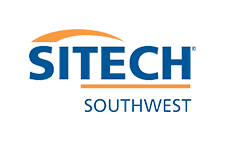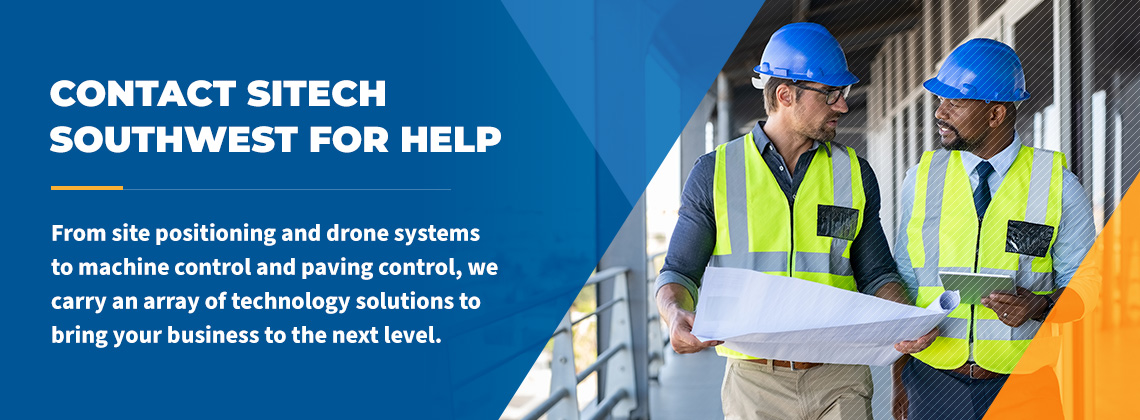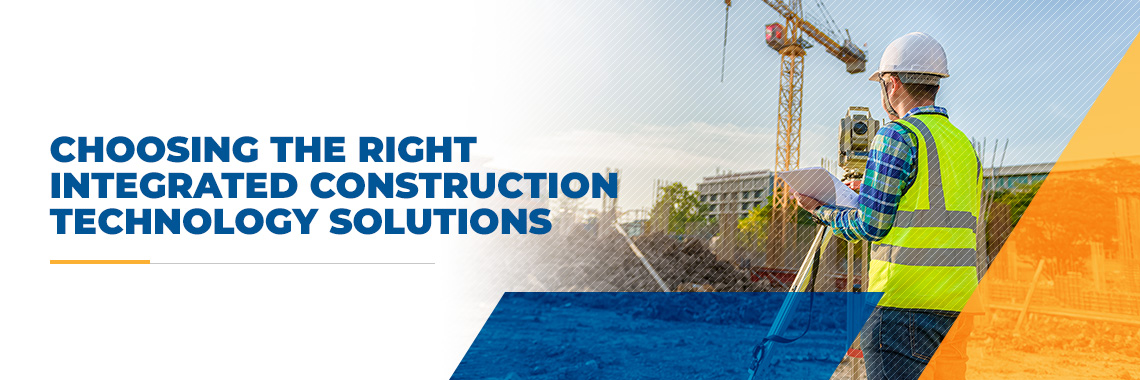
Technology has transformed the construction industry over the last few decades, bringing modern capabilities to the job site. From remote equipment controls to comprehensive budgeting and designing platforms, the options are vast — and can seem intimidating.
Because technology moves quickly, it can be difficult to tell if your chosen solution is still being developed or if it’s a reliable, well-established solution. Fortunately, SITECH Southwest specializes in integrated construction technology and can help you sort through the noise.
Let’s look more closely at the process for choosing construction technology solutions.
What Are Integrated Construction Technology Solutions?
Integrated technology simply refers to the link between two systems. It involves helping these two systems communicate and share data. Your remote control system may gather information from your fleet, while your site positioning software pulls data from your site positioning hardware to create a real-time model of the job site.
You can also integrate different software solutions like an accounting platform or enterprise resource planning (ERP) system. For example, you might send information from a project management platform to your accounting system for more accurate, faster billing.
When these various systems communicate well, you can:
- Ensure data flows efficiently by moving directly between the systems, instead of through an intermediary.
- Boost efficiency by eliminating manual processes that introduce more opportunities for error.
- Improve the return on investment (ROI) of various systems by maximizing their potential.
- Help you better meet business goals by tying together solutions across various departments.
- Improve the accuracy of data by eliminating manual processes.
There’s plenty of technology available in the construction industry, but not every contractor successfully integrates their technology solutions with other systems in the workflow. Successful integration is key to reducing errors, boosting the solution’s capabilities and ensuring the exchange of high-quality data.
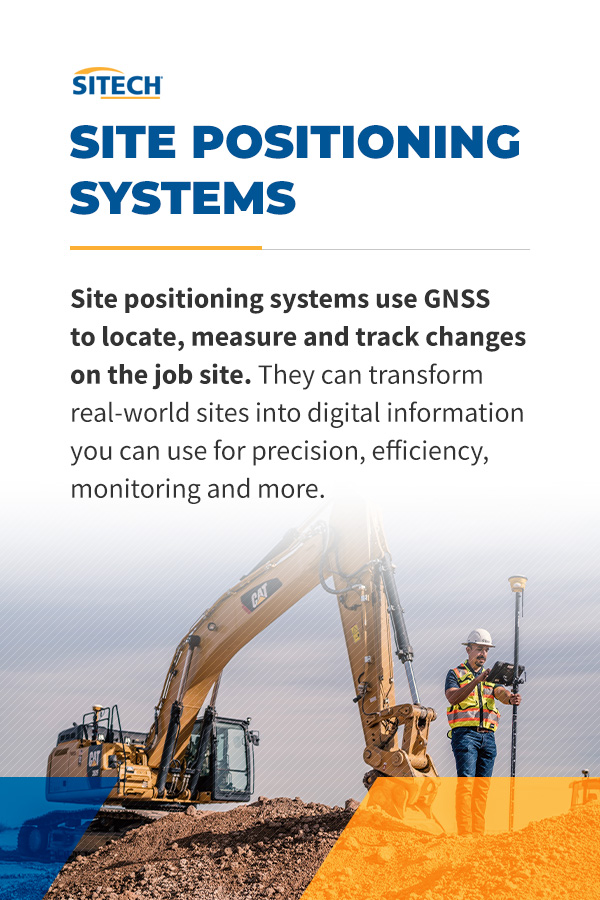
1. Identify Your Challenges
The first step is to spend time identifying your construction business’s challenges. It may sound obvious, but many contractors fall into the trap of adopting technology for the sake of adopting technology. Improving information technology in construction becomes a goal in and of itself, regardless of whether the solution actually solves a significant pain point. When this happens, the solution simply costs money and doesn’t provide visible benefits.
Whether you’re struggling with site analysis, material handling or some other aspect of the job, make sure your solution will actually solve your problems. Start by identifying your biggest challenges. A few areas to consider and technologies used in building construction include:
Site Analysis
The state of the job site is a foundational part of construction work, and site analysis has come a long way in the last decade. If you find yourself dealing with a high number of errors, inefficient processes or other problems during site analysis, there are several types of technology solutions available:
- Site positioning systems: Site positioning systems use GPS to locate, measure and track changes on the job site. They can transform real-world sites into digital information you can use for precision, efficiency, monitoring and more.
- Drones: Unmanned aerial vehicles (UAVs) can simplify surveying, collecting infrastructure data and staying connected on the construction site. It can gather topographical information from above, saving time and keeping workers safe.
- Software: After collecting site data, construction software can pull it all together, creating 3D models, management tools, data analysis and other valuable tools.
Material Handling
You may find that your material handling tasks are slowed down by poorly optimized loads and pathways. Technologies like machine control and weighing systems can help immensely, allowing you to achieve efficient material handling processes by collecting data and optimizing equipment operation. Integrated technology can help you process and transmit data smoothly.
Design Process
Contractors face a range of challenges during design, from communicating with architects and owners to catching errors before they become costly. Many tools can help during design, like precise site analysis features and building information modeling (BIM) platforms. If your design process has room for improvement, consider topics like communication between different stakeholders and the information’s accessibility.
An integrated solution, such as construction management software, can help you improve communication among stakeholders and systems for a more comprehensive approach to design. For instance, you might share site data directly with an architect, ensuring they have the most up-to-date information at hand and fewer mistakes occur.
Estimating
How you create your estimates can make a significant difference in their efficiency and accuracy. Data can come from many sources, and your processes determine how well the data integrates into reliable estimate calculations. Whether you’re dealing with errors or a slow, time-consuming process, consider how construction management software can help you improve your estimates.
Scheduling
Are you struggling with project management? Numerous moving parts and systems that don’t communicate well can make project management more difficult than it needs to be. Frequent errors, delays or miscommunications can be signs of poor project management.
Thankfully, construction management software can help here, too. It can add visibility and control to help you manage your resources and assets effectively and efficiently. You may even be able to automate parts of the system to save time.
Progress Monitoring
Monitoring progress is important for keeping your project on track, looking out for problems and maintaining efficiency. If you’re having trouble keeping tabs on your project, technology can help here, too.
Site positioning systems, drones and the right software can help you get real-time views of the construction site from anywhere at any time. Incorporate topographical data from drones and GPS data from site positioning systems into a comprehensive understanding of your progress.
Communication
Contractors need to communicate with many other people, like architects, engineers, employees and clients. When communication and data access are lacking in any of these areas, it can affect the organization’s success.
For example, inadequate discussions with the client or architect can cause the contractor to misunderstand the scope of the project and move forward with the wrong idea. Eventually, this can lead to costly reworks. Similarly, changes and updates must be relayed to everyone to avoid project errors or delays.
You can improve communication with the right software, such as a project management platform that allows you to connect with everyone involved in a build. Everyone can access the same information, such as timelines and BIM data, and stay on the same page.
Training
From safety issues and inefficiency to noncompliance with regulations, poor training can come with a variety of adverse effects. You can influence training through formal education, but you can also enlist technology, such as augmented reality and activity monitoring tools. These can alert you of dangerous driving behaviors and create opportunities for intervention and further training.
Safety
Many contractors use technology to keep their workers safer. You can apply sensors to objects or people to monitor for risks like collisions and driving when tired. Real-time GPS updates and tracking worker vital signs can offer proactive monitoring capabilities. Automation and remote control are great tools for safety, allowing workers to collect information about an area without entering or operating equipment in potentially hazardous locations.
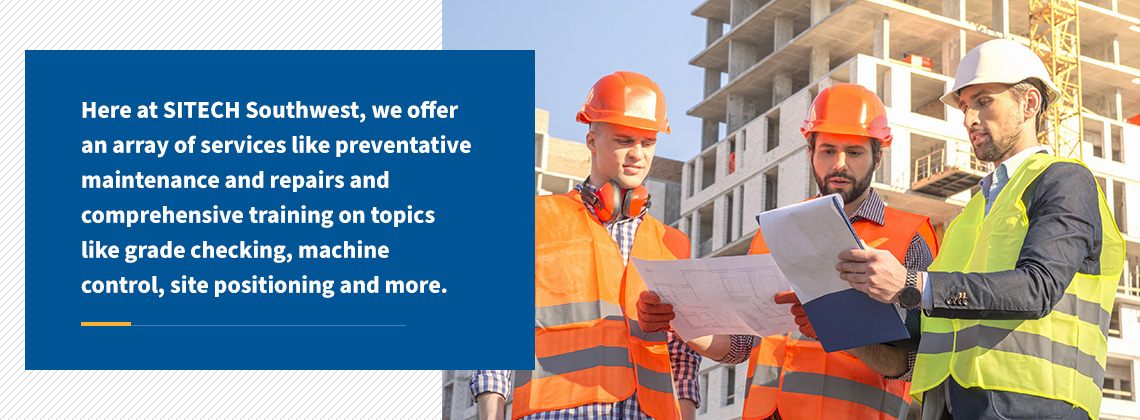
2. Research Solutions
As with most large purchases, the research phase is critical for finding IT solutions for the construction industry. Do some digging and identify multiple options that could solve your problem. If you’re having trouble with site analysis, you might look at various products for both hardware and software.
Read up on product reviews and consider getting the opinion of colleagues or industry professionals. Those who use the solution can give you some insider knowledge on the nuances of using it.
When you’re researching your solution, consider factors like:
- Ease of use: Your solution shouldn’t add frustration or time commitments to the workday. It needs to be intuitive and easy for you and your employees to use. Ease of use can also make training and implementation faster and reduce the risk of errors from complex, manual processes.
- Integrations: How well does the solution work with your existing systems? If you rely on site positioning data to control your equipment, the data needs to be in a format your machine control solution can understand. Integrated solutions should make the process smooth and seamless, with no need for manual intervention when communicating between systems.
- Support: Does your chosen solution offer plenty of support? Look for warranties, certified service technicians and an experienced provider that helps you make the most of your platform. Here at SITECH Southwest, we offer an array of services like preventative maintenance and repairs and comprehensive training on topics like grade checking, machine control, site positioning and more.
- Cost: Of course, your technology also needs to fit into your budget. Before you buy, make sure your potential solution will offer a high ROI or provide you with operational benefits that justify the price. Remember to look beyond financials and consider aspects like efficiency and safety that eventually impact your bottom line.
- Scalability: Will your solution grow with your business? Make sure it can adapt to the evolving needs of your business. For instance, some technology solutions will be costly or time-consuming to implement as you build your fleet or reach new clients. Consider how easy your chosen solution is to add to or adjust and whether your provider will help you upgrade.
- Features: Remember that your solution should actually address business challenges. Some features will be irrelevant, while some will be immensely valuable. Look for features that will align with your business goals or otherwise make life easier on and off the job site.
- Accessibility: Modern tech solutions should allow you to access your solution from anywhere. For instance, a cloud-based platform can allow you to access project data from a mobile device like a tablet or smartphone so you don’t have to haul around a laptop with specialized software or return to the office just to access a file.
3. Test Your Potential Solution
After completing your extensive research, be sure to test out your options. Construction technology can be a significant investment, so you’ll want to make sure it lives up to the hype. Trying out a system allows you to see how it folds into your workflow and integrates with other solutions you may have in place.
Rental equipment and software demos are a great way to gain access to a potential buy and see how it works. You can rent a piece of machine control equipment or download a construction management platform and use it for a project to get a good feel for it before buying.
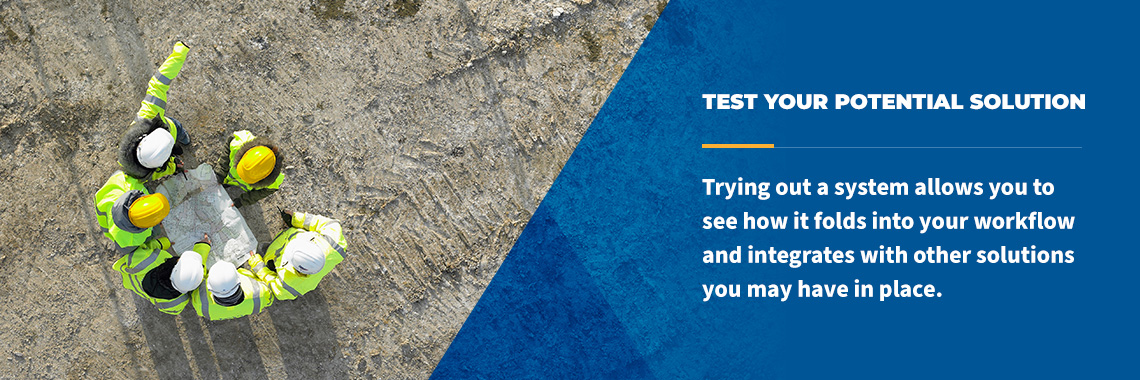
4. Implement the Solution Effectively
Digital transformation can be challenging. Even if you have the perfect solution, your implementation strategy can make or break its adoption. Before implementing your solution, consider the following aspects of your strategy and make sure you’re prepared for them:
- Complexity: Depending on the complexity of your solution, you may need to consider implementing it in phases or creating a gradual rollout. You’ll also need to leave enough time for planning and organization. See how your chosen solution will affect other processes like adherence to regulations and meeting contractual requirements.
- Focus: Is the technology adoption clear and focused, or is the company still a little fuzzy on why you’re doing it? Make sure everyone understands the value of the solution and how they’ll be using it. If departments don’t grasp the goals of the tech adoption, it may hinder your ability to get the most from the change.
- Security: Is your data going to be safe and secure? As you transition to a new system, work with your provider to make sure your business’s information stays safe. You’ll need to protect it from outside interference and from destruction, such as files lost during the implementation period.
- Organization-wide buy-in: Every member of the company should be on board with the new technology. Without it, you might experience friction and resistance that can affect how successful the solution will be. For example, a supervisor who doesn’t see the value of a new remote monitoring platform might never use it, reducing the ROI it has to offer. You’ll want to achieve buy-in across the organization for a smooth implementation.
5. Track Your Progress and Make Decisions
After implementing your solution, it’s time to evaluate. This step ties back to the first one — aligning your tech with your business goals. You need to determine if your solution has actually solved the problem.
Use some key performance indicators (KPIs) to check your ROI. The ROI may not be immediately clear in your finances, but you can find benefits in other parts of the business, such as improved productivity, better collaboration and lower workforce demands.
If you don’t see much benefit from your solution, revisit the earlier steps. Consider talking to an expert in integrated construction technology for assistance with your unique needs.
Contact SITECH Southwest for Help
Integrated technology might seem complicated, but modern solutions have a lot to offer. You can ease the challenges of implementation by working with a professional service provider.
Here at SITECH Southwest, we know the ins and outs of tech solutions for construction companies. From site positioning and drone systems to machine control and paving control, we carry an array of technology solutions to bring your business to the next level.
To learn more about construction technology, reach out to our knowledgeable team today.
